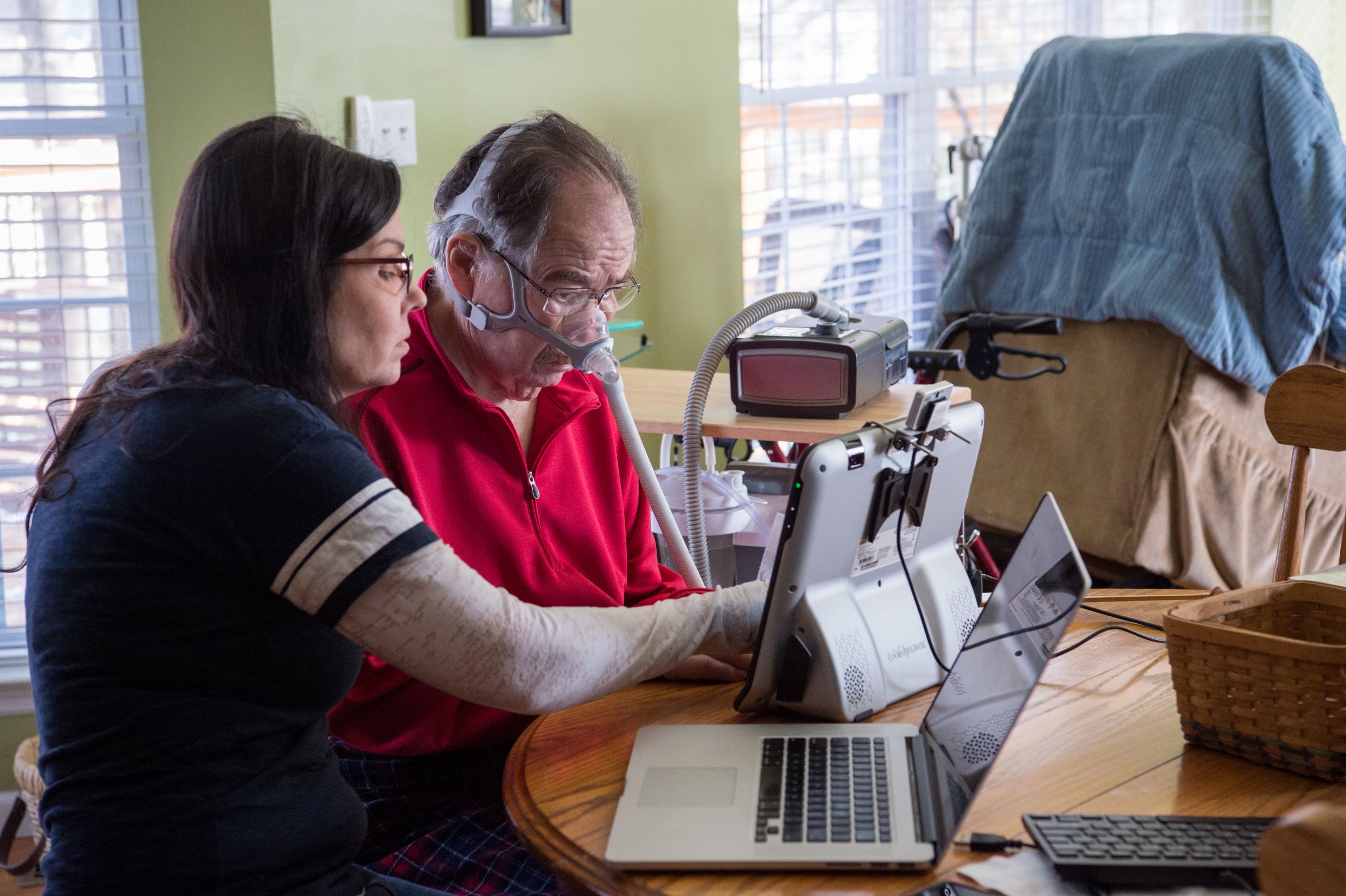The Case for Change
By modernizing technology, one prominent organization
is well on the way toward transformation

During its 35-year history, The ALS Association has worked to fulfill its mission of spurring awareness and supporting medical research on amyotrophic lateral sclerosis, a crippling and ultimately fatal disease that afflicts 22,000 Americans each year. And yet the organization may be best known for its fundraising—or, more precisely, one fundraising event.
The Ice Bucket Challenge, a viral sensation that featured videos of people dumping buckets of ice water over their heads, and then challenging others to do the same to help fight ALS, raised a whopping $115 million during six weeks in 2014.
The challenge raised more than money. It lifted The ALS Association’s profile, while placing the disease it fights squarely in the spotlight.
But the campaign’s success presented a challenge of its own: How could The ALS Association best spend all that money? Could the windfall represent a chance for the organization to change how it works and make it more effective?
And now, the spread of COVID-19 provides a tougher test for the organization: How can it best manage its operations during a time when some of its clients, workers, and their family members are becoming sick from the virus?
The ALS Association looked to tech solutions to make it more effective, flexible, and responsive. While its leaders decided to pour most of the Ice Bucket bonanza into fulfilling its traditional mission, they also developed a strategic plan that would improve its outreach to donors, upgrade the quality of the services it delivers to ALS sufferers, and better manage its operations, staff, and volunteers.
The mechanism for doing all that? A new tech platform now being activated throughout the organization.
The ALS Association’s in-process transformation has already begun to help it envision how it will navigate through the thicket of anxiety, concern, and disruption that comes with a global pandemic.
“COVID-19 has highlighted our necessity to transition to our new platform as soon as possible,” says Calaneet Balas, the organization’s chief executive. The platform will offer a shared database that will help The ALS Association access information across its network of 39 local chapters, as well as allow headquarters to assess the impact of the coronavirus on its operations. A new website that links the chapters together will enable the group to drive its fundraising to one site so it can immediately measure each campaign’s impact in any region.
The decision to invest in an all-encompassing tech platform was an easy one to make, Balas says—once the organization had the money to consider a tech transformation.
“The Ice Bucket Challenge served to shine a light on our own internal operations and it became clear that if we were to take the fight against ALS to the next level, we needed to improve our ability to carry out our mission and communicate that mission,” she says. “When we looked at our technology house, which I think is critical to meeting that mission, we clearly needed to improve.”
When the contract with its longtime tech vendor came up for renewal, The ALS Association tapped leaders, staff at both its national office and local chapters, volunteers, people living with ALS, and partners from outside the organization, and then corralled them into task forces to explore the best possible tech solutions.
It became clear that, in order to use any new technology platform to its fullest potential, the organization would need to operate as one unit more often.
“We had 40 of everything, which was completely disconnected,” says Balas. “Any time we wanted to start a new campaign, our digital team would have to replicate it 40 times. That was completely inefficient. We started to realize we were driving our donors to 40 different URLs and creating a lot of donor confusion. It was clearly not sustainable and was going to prevent us from getting to that transformative mission.”
Ultimately, the organization decided to follow in the footsteps of the Anti-Defamation League and other notable groups by opting for a new platform that would tie the data from all of its chapters together, while offering one unifying website for donors to respond to.
The new platform helps the organization better understand and serve its donors, affording it the opportunity to share donor data across its chapter network. It streamlines fundraising. While some old pitches were sent to the same donor multiple times, alienating some of them, the new system makes sure that all donors are reached only once.
In an era when transparency to donors is paramount, the modern tools also offer The ALS Association a method for reaching more people in new ways. It allows them to share narratives on what the organization is doing, as well as deliver stories to donors on research progress.
“Previously, our mission areas and operations departments were working on separate platforms that they had adopted over many years. This made it more difficult to share data across our organization and throughout our chapter network,” Balas adds. “By providing our mission and operations teams with a single platform and the cutting-edge tools that platform brings, we’re confident we’ll better be able to deliver care services, quickly fund promising research, and leverage our ALS advocates for a greater impact with policymakers.”
Those upgrades made sense from an operational point of view. Still, bringing all the stakeholders along took some work. Change is never easy. As she moved things forward, Balas encouraged everyone to keep an eye on the group’s mission and for ways to use new tech to improve how they did their jobs.
“I’ve learned that it’s easier said than done, but bold transformation really requires an appetite to let go of the past, let go of how things have been done, let go of old platforms. And that’s really hard, especially in the nonprofit world,” she says.
Now, as the era of COVID-19 shows us, groups need to remain flexible too. Along with creating transformative change for their operations, technology can help groups make necessary course corrections or revisions on the fly. Many will need to change the tone of their fundraising pitches to remain successful during the pandemic.
“We fully believe our new system and website will help us create new fundraising opportunities and advance our mission in the months and years to come, as we all adjust to our new normal,” says Balas.
She adds that an organization needs strong internal alignment and supportive leaders to take full advantage of new technology. Resources are also important, but Balas and others say that organizations with small budgets don’t necessarily need to put off tech solutions until they have made a considerable fundraising haul.
“We’re seeing more organizations that are moving toward engaging with constituents as consumers,” says Allyson Fryhoff, the chief strategic engagement officer at Salesforce.org. “At the same time, there’s a lot of call for transparency, both inside and outside the operation. People now want data that can help them maximize their fundraising, find who their top donors are, and identify which of their programs have the best outcomes. In terms of technology, every nonprofit can get started today on finding those solutions, even if they face some resource challenges.”
To learn more about how nonprofits are using technology to support their missions, check out Salesforce.org’s 2nd Edition Nonprofit Trends Report.



